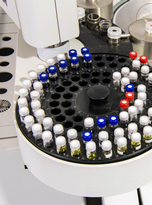Read and report vaccine reactions, harassment and failures.

The protective effect of utilizing passive tetanus antitoxin (tetanus anti-serum) in the treatment of tetanus resulted from the combined research and work of Edmond Nocard, Emil von Bering, and Shibasaburo Kitasato. Experimentation on the use of tetanus anti-serum for both the prevention and treatment of tetanus occurred among soldiers serving in World War I, as fatality rates from the disease were high and soldiers were considered to be at high risk of disease development related to field battles and shrapnel wounds. Hundreds of soldiers administered varying doses of tetanus anti-serums developed adverse reactions that included both acute allergic reactions and serum sickness.
In the mid- 1920’s, vaccine researchers developed a tetanus toxoid vaccine by inactivating the tetanus toxin using both formaldehyde and heat. Two individuals were injected with the tetanus toxoid and then exposed themselves to tetanus on at least two separate occasions. Prior to exposing themselves, their blood antibody levels were tested and reported to be 0.01 and 0.007 of American units of Tetanus toxoid per ml. Neither injected individual developed tetanus after exposure. In 1950, the World Health Organization (WHO) determined that a minimum blood antibody level of 0.01 IU/mL following the administration of the tetanus toxoid vaccine could be considered protective against tetanus disease.
The first tetanus toxoid vaccine became commercially available in 1938 and in the mid 1940’s, the tetanus toxoid was combined with diphtheria toxoid to create the tetanus- diphtheria (Td) toxoid vaccine and additionally combined with whole cell pertussis to create the diphtheria-tetanus-pertussis vaccine (DTP). The newly created DTP combination vaccine was then absorbed onto aluminum salts when researchers discovered aluminum’s ability to enhance blood immune responses to both diphtheria and tetanus. Numerous companies held licenses for tetanus toxoid vaccines in the mid 1940’s, however, product licensing was not indicative of product endorsement. Safety, purity, and potency (if tests were available to determine potency) were tested as part of licensing approval, however, product efficacy was not, and not required for product licensing. Companies that held tetanus toxoid vaccine licenses in 1945 included Parke Davis and Co., Sharp and Dohme, Cutter Laboratories, Lederle Laboratories and more.
In 1966, the Public Health Service Advisory Committee on Immunization Practices (now the CDC’s Advisory Committee on Immunization Practices) published its first tetanus, diphtheria and pertussis vaccine recommendations as well as recommendations for tetanus disease prevention pertaining to wound management. These recommendations formally stated that all infants receive three doses of diphtheria, tetanus, and pertussis vaccine (DTP) beginning between two and three months of age at intervals of 4 to 6 weeks. Additional booster doses were also recommended at one year of age and between the age of three and six years, preferably prior to school entry. School children and adults not previously vaccinated with DTP were recommended to receive two doses of tetanus-diphtheria (Td) vaccine at four to six weeks intervals with a booster dose one year later and routine booster doses every 10 years. The Td vaccine was recommended for use among schoolchildren and adults instead of the DTP vaccine. This recommendation was made due to the significant increase in adverse reactions that were noted to occur following full doses of the diphtheria toxoid found in the DTP vaccine as age increased. For wound management, when a tetanus toxoid vaccine booster dose had previously been administered more than one year prior or when a person was not previously vaccinated against tetanus, Td vaccination was recommended. However, tetanus toxoid booster doses administered more frequently than every 10 years were not recommended by ACIP as they were reported to be associated with more frequent and severe reactions.
In September of 1984, the CDC’s ACIP published its first adult vaccination guidelines. In this publication, adults not previously vaccinated with tetanus toxoid vaccine were recommended to receive two doses of Td vaccine at least four weeks apart, followed by a booster dose one year later and routine booster doses every 10 years. In the case of wound management, Td vaccine was recommended if a person had not received a Td vaccine within five years. Persons previously vaccinated with the DTP primary series were recommended to receive the first booster dose of Td vaccine between the age of 14 and 16.
The FDA approved the first acellular pertussis combination vaccine (DTaP) for use in the United States in 1991, however, between 1991 and 1996, the whole cell diphtheria, tetanus, and pertussis (DPT) vaccine continued to be recommended for the first three primary doses at 2, 4, and 6 months of age. The DTaP vaccine was only approved for use in children between the ages of 15 months and 6 years after completion of three primary doses of DPT.
In 1995, the American Academy of Pediatrics (AAP) and the CDC’s ACIP published a harmonized childhood vaccine schedule and decreased the recommended age of the adolescent booster dose of tetanus-diphtheria (Td) vaccine from 14-16 years, to age 11-12 years. In this recommendation, ACIP stated that blood antibody levels considered to be protective against tetanus declined with age, and reported that 28 percent of children and teenagers between the ages of six and 16 years of age, despite previous vaccination, were found to have tetanus antibodies below minimally acceptable levels considered protective against tetanus disease. Further, ACIP stated that lowering the recommended age of the Td booster dose to 11-12 years of age would encourage a routine preadolescent healthcare visit where health care practitioners could administer additional vaccines such as a second MMR dose, recommended in 1989 following a resurgence in measles cases related to MMR vaccine failure, and the hepatitis B vaccine, in children not previously vaccinated.
The CDC’s ACIP updated its diphtheria, tetanus, and acellular pertussis vaccine (DTaP) recommendation in 1997, and recommended that all children receive five doses of DTaP vaccine, at 2, 4, 6, 15-18 months and 4-6 years of age, in lieu of the highly reactive whole cell DPT vaccine.
In 2005, the FDA approved two tetanus, diphtheria and acellular pertussis vaccines (Tdap), targeting adolescents and adults. Boostrix vaccine received initial approval for use in persons between 10 and 18 years of age, and Adacel received approval for use in individuals aged 11 through 64 years. Following FDA approval, the CDC’s Advisory Committee on Immunization Practices (ACIP) promptly recommended that all 11-12-year olds receive a dose of Tdap vaccine. This recommendation was made in response to the high number of pertussis cases and outbreaks occurring among adolescents due to the waning of vaccine acquired pertussis immunity. ACIP recommended that all 11 to 18-year-old adolescents receive a dose of Tdap, including those already vaccinated with the previously recommended booster dose of tetanus-diphtheria (Td) vaccine at age 11-12. While ACIP recommended a five-year interval between Tdap and Td vaccine administration related to the increased risk of both local and systemic reactions, they stated that vaccination at an interval of less than five years was still acceptable. Additionally, ACIP encouraged health care practitioners to administer the newly FDA approved Tdap vaccine at the same time as the newly licensed meningococcal conjugate vaccine (MCV4). This recommendation was made even though no safety or immunogenicity data existed to support the administration of both vaccines simultaneously.
In 2006, ACIP recommended that all adults between the ages of 19 and 65 years receive a dose of Tdap vaccine. The Tdap vaccine was recommended to be administered one time in lieu of the Td vaccine and given if more than 10 years had passed since administration of Td vaccine had occurred. ACIP, however, reported that the Tdap vaccine could be administered at an earlier interval, to protect a person against pertussis. In their report, ACIP admitted that pre-licensing clinical trials of Adacel vaccine, the only Tdap vaccine FDA approved at the time for use in adults between 19 and 64 years of age, had purposely excluded all persons previously vaccinated with any vaccine containing tetanus or diphtheria toxoid and/or pertussis vaccine within the preceding five years, and that it was not known if vaccinating at an earlier interval than 10 years was, in fact, safe. ACIP also acknowledged that adult safety studies of Adacel vaccine were not sufficient enough to be able to detect rare adverse events that might occur following vaccination. Tdap vaccine was also recommended for all women of childbearing age, and vaccination was encouraged prior to pregnancy or immediately postpartum. As well, all health care providers with direct patient contact were also recommended to receive Tdap vaccine if at least 2 years had passed since a previous dose of Td vaccine had been administered.
In October of 2012, the ACIP recommended that all pregnant women receive a Tdap vaccine during each pregnancy, between 27 and 36 weeks gestation. At the time of this recommendation, ACIP acknowledged that a theoretical risk exists for severe local reactions
in pregnant women vaccinated frequently due to multiple pregnancies spaced closely together, but reported that current tetanus toxoid containing vaccines contained less tetanus toxin than previously recommended tetanus toxoid vaccines and stated that the potential benefit of preventing pertussis morbidity and mortality in infants outweighs the theoretical concerns of possible severe adverse events.
In this recommendation, ACIP also acknowledged that no studies had ever examined the safety of administering Tdap vaccine to pregnant women during subsequent pregnancies, but reported that going forward, they planned to monitor both the Vaccine Adverse Events Reporting System (VAERS) and the Vaccine Safety Datalink (VSD) to assess for adverse events, maternal adverse pregnancy outcomes and birth outcomes.
In October 2022, the FDA approved Boostrix Tdap vaccine for use during the third trimester of pregnancy based on a reanalysis of data from a non-US formulation of the vaccine. According to the FDA, the use of Boostrix during the third trimester of pregnancy would likely offer vaccine acquired protection against pertussis to infants under two months. Adacel Tdap vaccine received FDA approval for use in women during the third trimester of pregnancy in January 2023 for the prevention of pertussis in infants under two months of age. This approval was also based on a reanalysis of data pertaining to pertussis that was not specific to the Adacel Tdap vaccine.
In 2023, Sanofi-Pasteur discontinued manufacturing of the Diphtheria-tetanus (DT) vaccine and there is currently no diphtheria or tetanus vaccine available in the U.S. for infants and children who can’t receive DTaP vaccine due to a contraindication to acellular pertussis vaccine. In February 2024, the CDC recommended that infant and children with a contraindication to acellular pertussis vaccine receive the tetanus-diphtheria (Td) vaccine in place of DTaP. As Td vaccine is licensed for individuals seven years of age and older, this recommendation is considered an “off-label” use of the vaccine.
The CDC currently recommends that all children receive five doses of diphtheria, tetanus, and acellular pertussis vaccine (DTaP) at 2, 4, 6, 15-18 months, and 4-6 years, with an adolescent booster dose of tetanus, diphtheria, and acellular pertussis vaccine (Tdap) at age 11-12. Adults not previous vaccinated with Tdap are recommended to receive one dose of the vaccine, and then continue to receive booster doses of Td or Tdap vaccine every 10 years.
All pregnant women are recommended by the CDC to receive a Tdap vaccine between 27- and 36-weeks’ gestation, during each pregnancy, regardless of any previous Tdap vaccination.
In 2018, the CDC reported that 58.9 percent of adults 65 years and older, 62.8 percent of adults 50 to 64 years, 64.5 percent of adults 19 to 49, and 62.9 percent of adults 19 and younger had received a tetanus containing vaccine within the previous 10 years. When Tdap vaccination rates could be assessed among adults, 22.2 percent of adult 65 years and older, 33.5 percent of adults 19 to 64 years, and 31.2 percent of adults 19 and older had reported receiving a dose Tdap vaccine within the previous 10 years. Whites were found to have a higher tetanus vaccination rates when compared to Hispanics, blacks, and Asians. The CDC also reported that between 2010 and 2018, Tdap vaccination rates increased from 6.9 percent to 31.2 percent.
In 2023, the CDC reported that 94.2 percent of all children born in 2018-2019 had received at least three doses of the tetanus toxoid containing DTaP vaccine and 81.9 percent had received at least four DTaP vaccine doses. As well, in 2021, the CDC also reported that 90.1 percent of all adolescents had received a booster dose of Tdap vaccine in 2020.
IMPORTANT NOTE: NVIC encourages you to become fully informed about Tetanus and the Tetanus vaccine by reading all sections in the Table of Contents , which contain many links and resources such as the manufacturer product information inserts, and to speak with one or more trusted health care professionals before making a vaccination decision for yourself or your child. This information is for educational purposes only and is not intended as medical advice.



